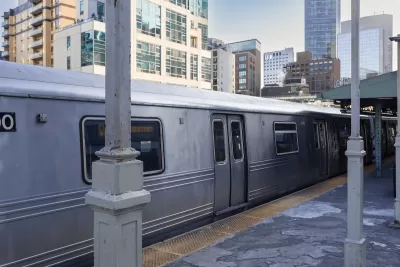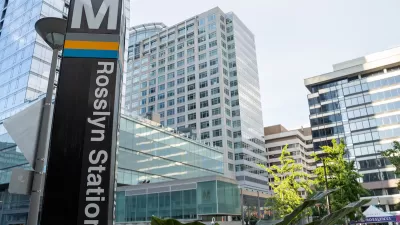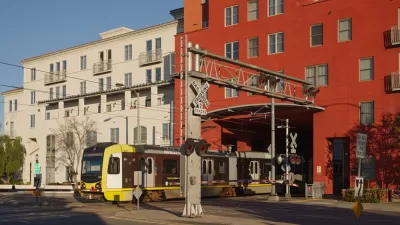Tying transit and land acquisition funding together could help produce more housing near transit hubs.

New research from the Urban Institute’s Yonah Freemark reveals that only a small percentage of housing development in the United States is located near transit. As Freemark explains, “I found that, in urban areas, tracts with transit stations added about 2 million housing units between 2000 and 2019. But those without stations added 17.6 million units. Too many new housing units are being added far from stations, increasing transportation costs for millions of Americans.”
Freemark adds, “One explanation for inadequate housing near transit is that transit agencies do not prioritize transit-adjacent housing development and lack a dedicated source of funding to acquire land for such projects. To help enable transit-oriented development, a federal land acquisition program that supplements transportation infrastructure grants could help transit agencies and local governments in acquiring properties to encourage housing development.”
Freemark recommends tying transit and land acquisition grants together via a “dedicated land acquisition program. This program’s funds could be used specifically to buy vacant or underused land, such as surface parking lots or one-story strip malls primed for redevelopment.” Cities and transit agencies could then use public-private partnerships with developers or social housing programs to build more affordable housing near transportation options.
FULL STORY: Spurring Housing Development Near Transit through Federally Funded Land Acquisition

Planetizen Federal Action Tracker
A weekly monitor of how Trump’s orders and actions are impacting planners and planning in America.

Congressman Proposes Bill to Rename DC Metro “Trump Train”
The Make Autorail Great Again Act would withhold federal funding to the system until the Washington Metropolitan Area Transit Authority (WMATA), rebrands as the Washington Metropolitan Authority for Greater Access (WMAGA).

The Simple Legislative Tool Transforming Vacant Downtowns
In California, Michigan and Georgia, an easy win is bringing dollars — and delight — back to city centers.

DC Backpedals on Bike Lane Protection, Swaps Barriers for Paint
Citing aesthetic concerns, the city is removing the concrete barriers and flexposts that once separated Arizona Avenue cyclists from motor vehicles.

In These Cities, Most New Housing is Under 441 Square Feet
With loosened restrictions on “micro-housing,” tiny units now make up as much as 66% of newly constructed housing.

Albuquerque’s Microtransit: A Planner’s Answer to Food Access Gaps
New microtransit vans in Albuquerque aim to close food access gaps by linking low-income areas to grocery stores, cutting travel times by 30 percent and offering planners a scalable model for equity-focused transit.
Urban Design for Planners 1: Software Tools
This six-course series explores essential urban design concepts using open source software and equips planners with the tools they need to participate fully in the urban design process.
Planning for Universal Design
Learn the tools for implementing Universal Design in planning regulations.
Smith Gee Studio
City of Charlotte
City of Camden Redevelopment Agency
City of Astoria
Transportation Research & Education Center (TREC) at Portland State University
US High Speed Rail Association
City of Camden Redevelopment Agency
Municipality of Princeton (NJ)





























